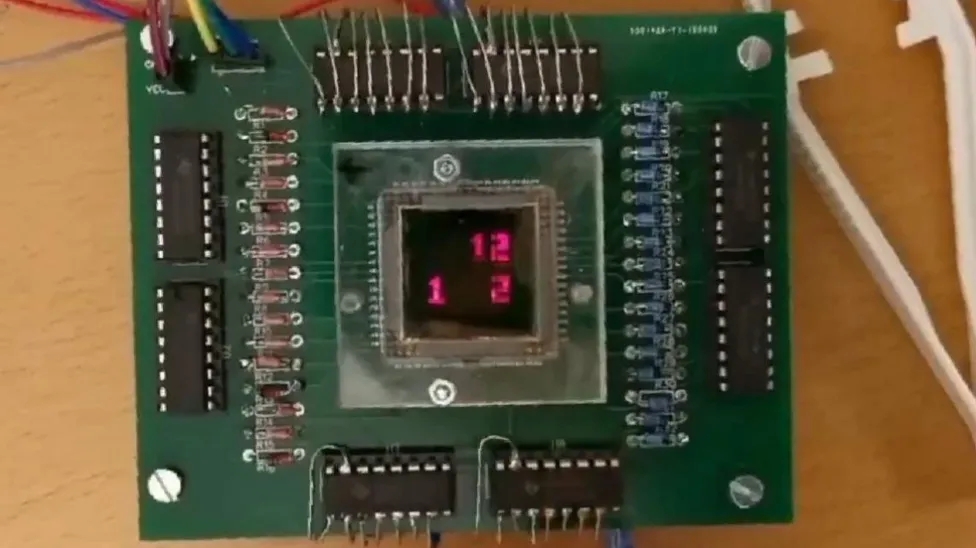At first glance, it looks like a relic from the 1980s. A tiny computer screen with flickering, low-resolution text scrolling across it. But this could be the future.
The screen was made using perovskite light emitting diode (PeLED) technology. It is radically different to the LED technology used in your smartphone display today, and it could lead to devices that are thinner, cheaper and have longer battery life.
Not only that, PeLEDs are very unusual in that they can absorb light as well as emit it, meaning you can use the same material to integrate touch, fingerprint and ambient light-sensing capabilities, says Feng Gao at Linköping University in Sweden.
“This is difficult but we think it’s possible.”
In today’s smartphones, such functions are carried out by electronic components separate to a phone’s screen itself.
In a paper published in April, external, Prof Gao and colleagues demonstrated their prototype with touch and ambient light sensitivity already working.
“It’s a very nice demonstration… it’s very new,” says Daniele Braga, head of sales and marketing for Fluxim, a technology research firm in Switzerland. Though he notes that optimising all the different functions promised here might make it difficult to commercialise this kind of display quickly.
Via video call, Prof Gao shows off the latest version of the technology. It is another small screen, but this time the pixels per inch (ppi), a measurement of the sharpness of the display, has been nearly doubled – at 90 ppi.
On the screen, a simple animation plays, showing two stick figures fighting. A paper with further details about this prototype has just been published, external.
Read the entire article here: https://www.bbc.co.uk/news/articles/c4nn6z6z4ypo




